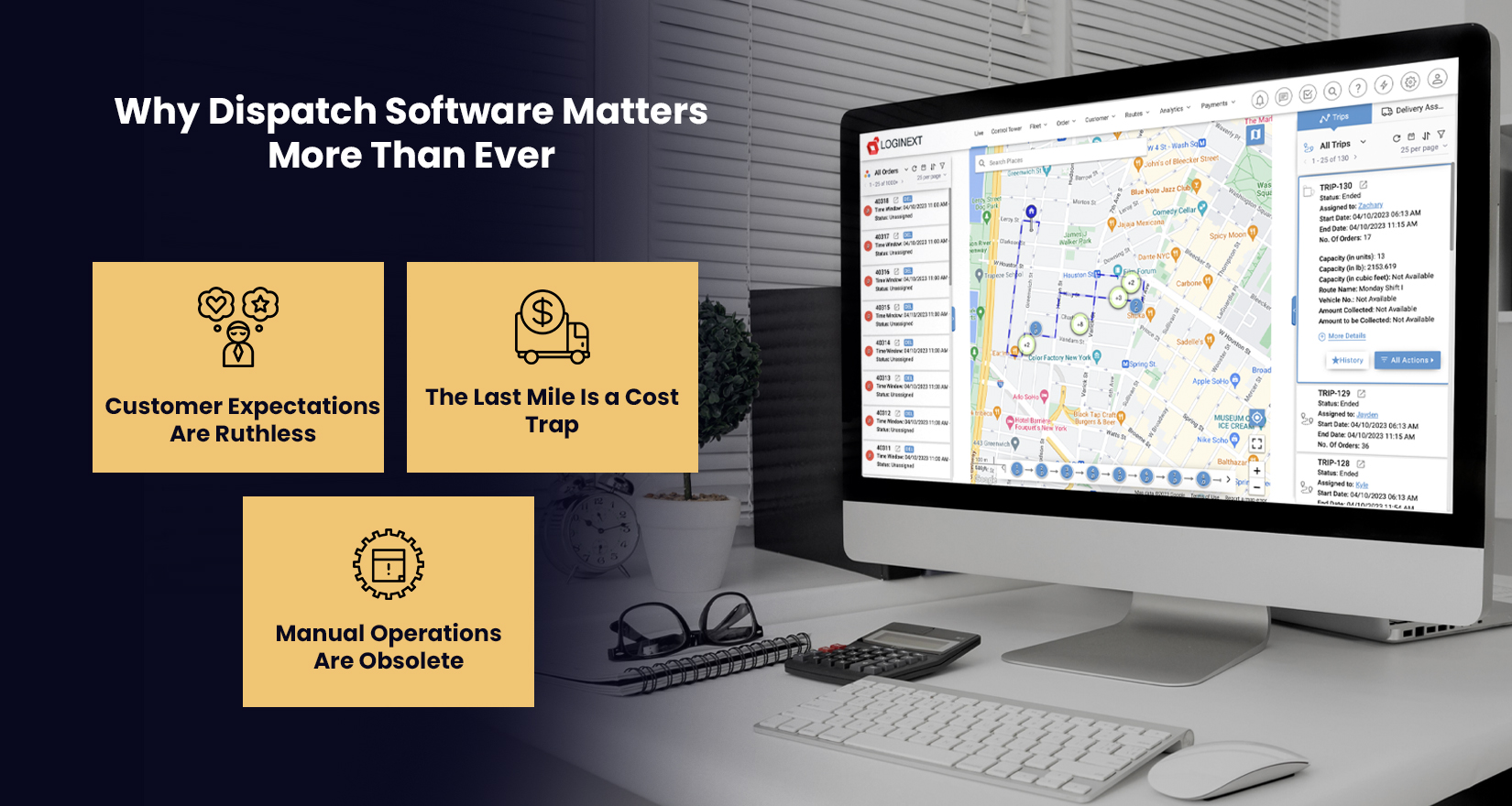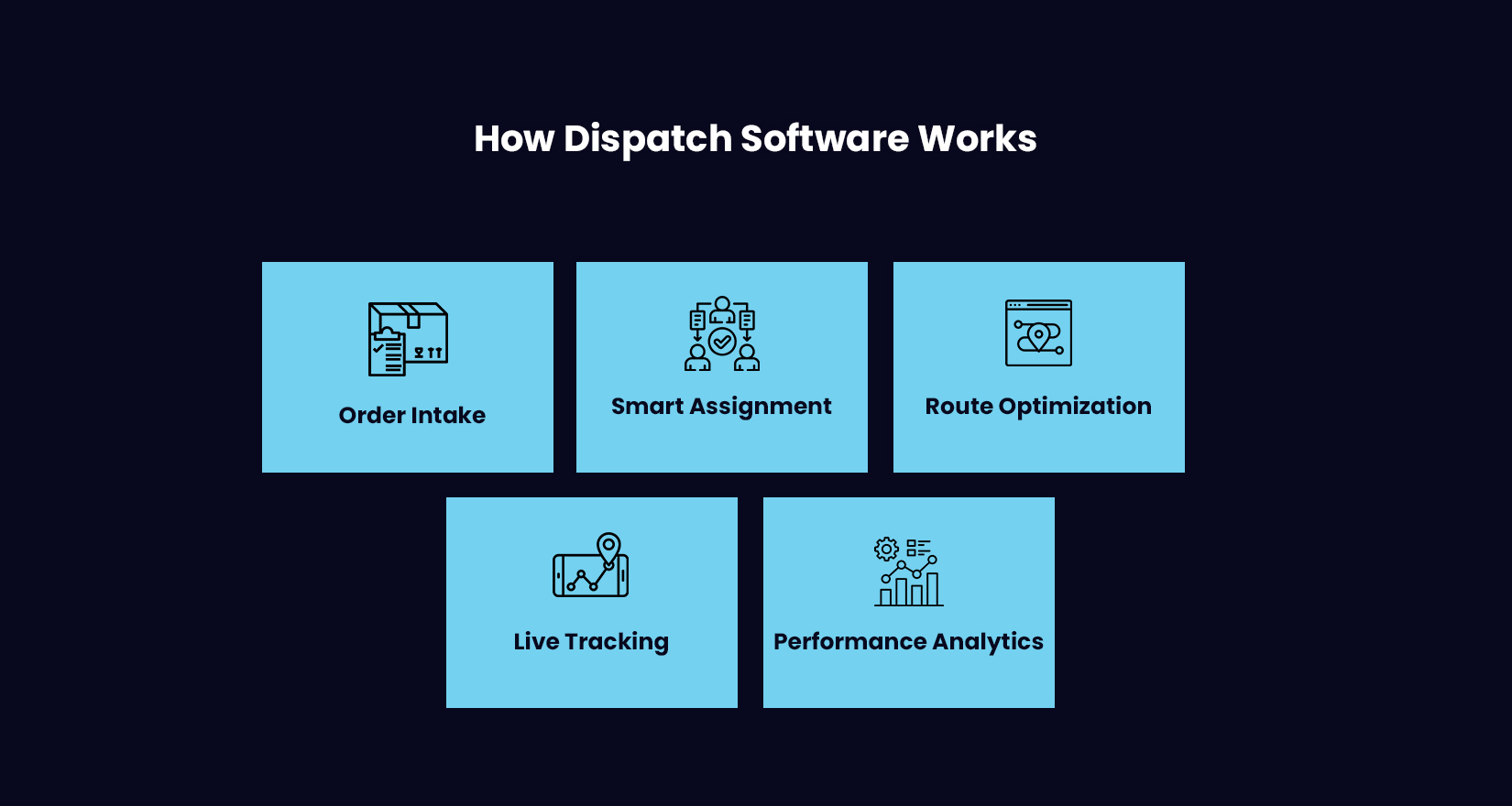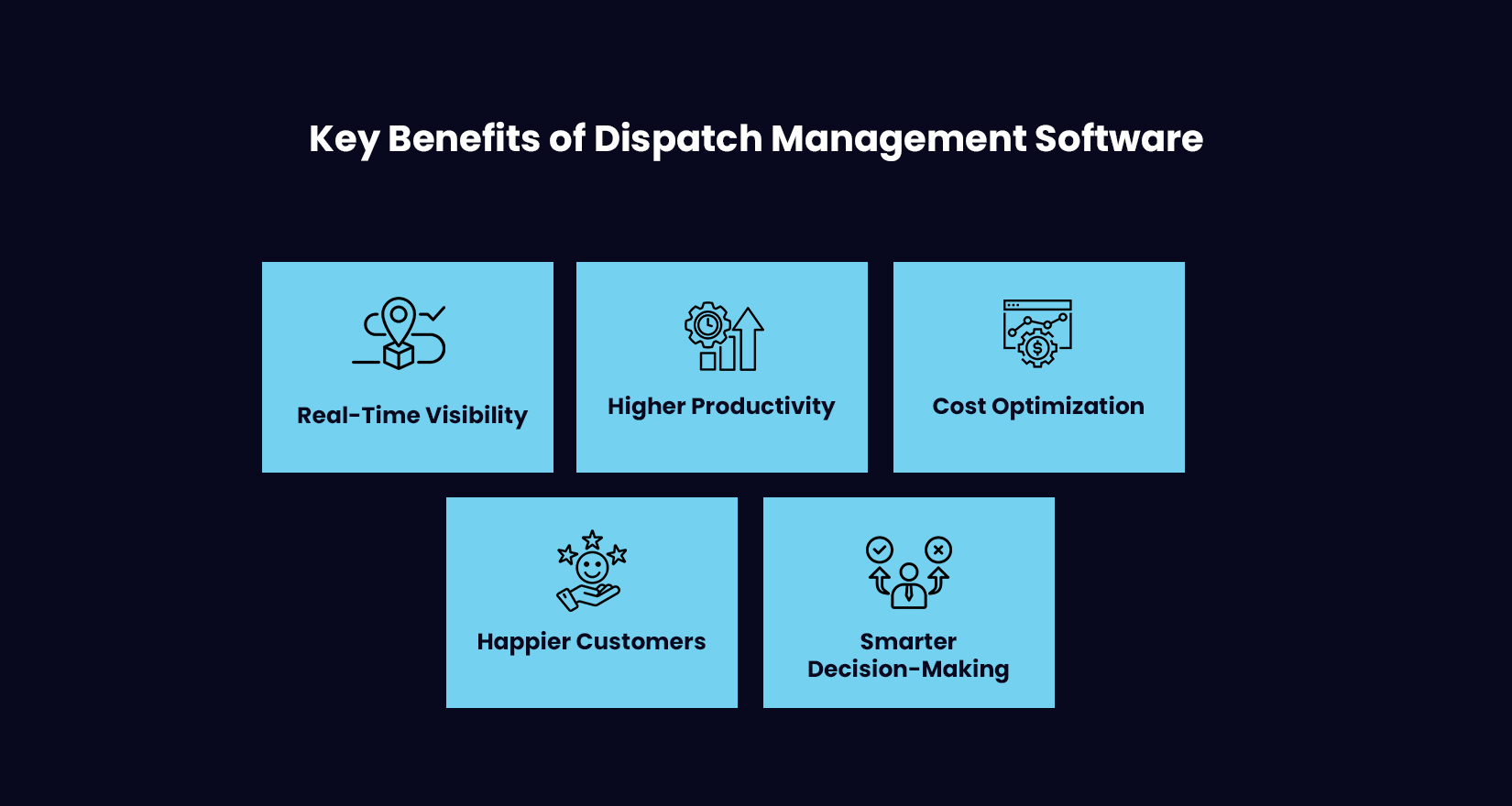
What Is Dispatch Software? The Unsung Hero Behind Every Fast Delivery
In logistics, speed is a currency. Customers anticipate delivery within hours, not days—and those who can’t, waste customers and profits. So what is dispatch software? Let’s find out in the blog. Under every “Arriving Today” notification, is a quiet machine that lets you coordinate orders, design your route, and maintain service with less effort, in this process it’s quietly evolving the efficiency of entire industries.
So, What Is Dispatch Software?
In simple language, dispatch software is the digital brain that controls your delivery operations. It automates assigning orders, routing drivers, and tracking deliveries in real time.
Think of it like mission control for logistics. A dispatch management solution that keeps your fleet rolling, your ETAs accurate, and your customers satisfied.
Where businesses used to depend on databases, phone calls, and manual follow-up, today’s dispatch management software is providing intelligence and automation to the entire dispatching process. It define the right driver with the right order at the right time—without the chaos, confusion, or penalty of being wrong.
Why Dispatch Software Matters More Than Ever

The market for global delivery management software is thriving. In fact, it is estimated to surpass $4.5 billion by 2030, with a CAGR of 11.2%. One thing is clear: businesses are doubling down on automation to keep up with higher volume and elevated customer expectations.
Here’s Why:
1. Customer Expectations Are Ruthless:
According to a PwC survey, 41% of consumers would pay more for same-day delivery. Slow or unreliable delivery is not just an inconvenience but a deal breaker.
2. The Last Mile is a Cost Trap:
Over 50% of all logistics costs are in the last mile of delivery. Unless dispatch is done efficiently, costs can soar.
3. Manual Operations Are Obsolete:
Whiteboards and WhatsApp to coordinate operations will not work anymore. In order to maintain a competitive advantage, businesses need a scalable real-time dispatch management software.
How Dispatch Software Works

Dispatch software connects orders, drivers, vehicles, and customers through a unified digital platform. Here’s the basic flow:
1. Order Receipt:
The system receives orders automatically from your e-commerce or ERP system.
2. Smart Assignment:
Leveraging AI and automation, the dispatch management solution schedules your deliveries based on factors. Factors, such as proximity to the sender and cargo capacity, and within specified delivery windows.
3. Route Optimization:
The solution plans the most efficient route, taking into account real-time traffic, current weather, and road conditions. Wit this it is able to minimize travel time and fuel consumption.
4. Live Tracking:
The system gives dispatchers and end customers’ ability to track the delivery while en-route with GPS coordinates and status notifications.
5. Performance Analytics:
The solution captures all delivery data to improve decision making for future dispatches (and more efficient use of your fleet).
The result? A closed feedback loop where every delivery generates insights back into the system, essentially turning logistics into a self-optimizing engine.
Key Benefits of Dispatch Management Software

Let’s discuss why this technology is becoming essential for modern logistics:
1. Real-Time Visibility:
You now no longer need to wonder where your drivers are. Dispatchers can take action in real-time with maps and live status updates if their drivers are delayed or take a wrong turn.
2. Higher Productivity:
With automated routing and scheduling, drivers spend less time idling. It’s been cited in reports that AI-enhanced dispatching systems can drive more than 25% more deliveries with better intelligence.
3. Cost Optimization:
Fuel, time, and labor— your top three operational expenses—are all optimized for you with intelligent dispatching. Companies that have leverage a more automated dispatch system have reported saved up to 30% of their operating costs.
4. Happier Customers:
Real-time ETAs, accurate delivery windows, and real-time status notifications lead to less customer support calls and increase a support team’s five-star reviews.
5. Smarter Decision Making:
The analytics dashboards provide visibility to understand better delivery performance in terms of location, driver, and delivery windows. It’s not only about delivery, it’s more about getting smarter everyday.
Industry Applications: Beyond the Delivery Van
Dispatch management software can be useful for more than just delivery and food businesses. Its versatility means it can be applied in many sectors, including:
1. Field Services:
Assigning and monitoring technicians for maintenance or repair visits, allowing for customer responsiveness and reducing their downtime.
2. Healthcare:
Maintaining time-sensitive medical delivery, lab samples, and patient transport, all while meeting critically imposed time constraints and compliance deadlines.
3. Retail & eCommerce:
Managing high-volume orders in last-mile deliveries, effectively reducing the time it takes to deliver and tracking properly to enhance the customer experience and satisfaction.
4. Transportation & Logistics:
Managing fleet, optimizing route management, and managing intercity shipments to increase operational efficiency.
5. Utilities:
Coordinate emergency dispatch and workforce in/out across the service area to allow quick response times for service and/or outages.
Where speed and accuracy is critical, dispatch software can show an improved ROI.
Modern Dispatching: Powered by AI and Machine Learning
The newest advancement in dispatch technology is intelligence. AI and machine learning are taking traditional, static systems and converting them into dynamic engines, capable of learning from every delivery.
For example:
– Predictive analytics helps anticipate traffic delays and makes task reassignments in real-time.
– Machine learning models recognize delivery patterns to improve route efficiency.
– Automated alerts can help avoid SLA breaches before they happen.
In summary, dispatch management solutions are now not just tools, they’re integral, strategic assets for the future of logistics automation.
Choosing the Right Dispatch Software
Choosing the appropriate platform can be a critical choice for your delivery ecosystem. Here’s what to look for in your platform of choice:
1. Scalability: Can it grow with rising order volumes, without having interruptions?
2. Automation: Does it interface/seamlessly connect with your ERP, CRM, and last mile tools?
3. User Experience: Is it seamless for the dispatcher as well as the drivers?
4. Automation: What is the sophistication and capacity of its AI and routing capabilities?
5. Support & Security: Talk about data protection and 24/7 technical support capability and uptime.
A good dispatch management solution combines these features into one nimble platform that can evolve as your business needs change.
The Future: Autonomous Dispatching and Predictive Delivery
The next era for dispatching will be fully autonomous systems. Which means that AI doesn’t just optimize routes, but operates on an entire dispatch flow, from order placement to delivered product.
Imagine a software that:
– Predicts when order volume will surge based on weather and holidays.
– Assigns drivers to orders before ever even arriving.
– Syncs with your EV fleets for carbon-efficient routing.
It sounds like science fiction but that is where dispatch management software is headed.
Conclusion
For every on-time delivery promise, there is a silent engine optimizing decision-making, dispatching drivers, and making sure everything runs like clockwork. This is the power of dispatch software. For your business, it is essential to know what dispatch software is and why you need it.
It is the quiet hero of modern logistics, making certain that your next-day delivery promise is not just a marketing slogan but a promise fulfilled. Want to see for yourself? Book a demo with LogiNext and find out how intelligent dispatching can transform your operations. Click on the red button to know more.
49







@LogiNext